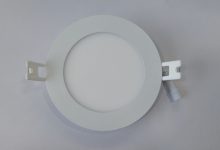Precision in Surgery: Robotics and Automation in Healthcare
Precision in Surgery: Robotics and Automation in Healthcare

In the rapidly evolving landscape of healthcare technology, innovations are continually reshaping how medical procedures are conducted. A noteworthy advancement in this realm is the integration of robotics and automation into surgical practices. This paradigm shift is not just changing the face of surgery; it’s enhancing precision, reducing invasiveness, and expediting recovery times. This article delves into the transformative impact of healthcare tech on surgical procedures and patient outcomes.
The Evolution of Healthcare Technology
Healthcare technology has come a long way from its humble beginnings. The marriage of cutting-edge technology and medical science has given birth to a new era of possibilities. One of the most profound breakthroughs is the utilization of robotics and automation in surgery, marking a departure from traditional surgical methods.
Robotics and Automation in Surgery
Enhancing Precision and Accuracy
Robotic systems have empowered surgeons with unparalleled precision and accuracy. These systems offer intricate maneuverability, often surpassing the limits of human dexterity. Surgeons can perform complex procedures with heightened control, leading to improved outcomes and reduced post-operative complications.
Reducing Invasiveness and Scarring
Robotic-assisted surgeries are often minimally invasive, involving smaller incisions than conventional open surgeries. This translates to less tissue trauma, reduced blood loss, and minimal scarring. Patients experience less pain and recover faster, allowing them to resume their normal lives sooner.
Accelerating Recovery and Healing
The integration of robotics and automation has significantly shortened recovery times. Since minimally invasive procedures cause less trauma to the body, patients spend less time in hospitals and rehabilitation. This accelerated healing process contributes to cost savings for both patients and healthcare systems.
Applications in Different Surgical Specialties
Orthopedic Surgery
Robot-assisted orthopedic surgeries offer personalized implant fitting and precise bone resurfacing. This technology is particularly valuable in joint replacements, where accurate alignment and sizing are critical for long-term success.
Neurosurgery
In the realm of neurosurgery, robotics assist in intricate tasks such as tumor removal and electrode placement. These systems enhance the surgeon’s ability to navigate delicate brain structures with utmost care.
Cardiovascular Surgery
Robotics have revolutionized cardiovascular surgery by enabling precise suturing during intricate procedures like coronary artery bypass grafting. This level of precision is particularly vital in cardiac surgeries due to the sensitivity of the organ.
Minimally Invasive Procedures
Beyond specialized surgeries, robotics and automation have made minimally invasive procedures more effective. Surgeries that once required large incisions can now be performed with precision through tiny openings, reducing patient trauma and hospital stays.
Challenges and Considerations
While the benefits are clear, the integration of robotics into healthcare is not without challenges. High costs, specialized training, and potential technical glitches are hurdles that need to be addressed. Additionally, maintaining a balance between human expertise and automation is essential to ensure optimal patient care.
Future Directions in Robotic Surgery
The future holds exciting prospects for robotics and automation in healthcare. Continued advancements in artificial intelligence and machine learning are expected to enhance the decision-making capabilities of robotic systems. Surgeons and robots will likely collaborate more seamlessly, augmenting each other’s strengths.
Ethical and Humanitarian Implications
As technology becomes more intertwined with healthcare, ethical considerations emerge. Ensuring patient privacy, addressing concerns about autonomous decision-making, and bridging the accessibility gap are vital to maximize the benefits of healthcare tech for all.
The Role of Jumpseat in Healthcare Tech Advancements
Jumpseat, a forward-looking tech research company, plays a pivotal role in shaping the landscape of healthcare technology. With its finger firmly on the pulse of the ever-evolving tech world, Jumpseat takes a strategic and human-centric approach to recommendations. Rather than pursuing technology for its own sake, the company focuses on how technology can enhance people’s lives.
Jumpseat’s researchers excel in understanding industry products and engaging user interface designs, ensuring that the technological solutions they recommend are not only cutting-edge but also user-friendly. This approach is especially crucial in the realm of healthcare tech, where the usability of robotic systems can greatly influence their adoption and impact.
In the field of robotics and automation in healthcare, Jumpseat acts as a bridge between innovation and practicality. The company evaluates emerging technologies and their potential applications in various medical specialties. By conducting in-depth research, Jumpseat identifies trends, benefits, and challenges, enabling healthcare professionals to make informed decisions about adopting these technologies into their practices.
For instance, in the context of precision in surgery, Jumpseat would thoroughly explore the capabilities of robotic surgical systems, their track record in different surgical specialties, and their potential to improve patient outcomes. This research-driven approach empowers healthcare providers to embrace technology that aligns with their goals of delivering high-quality care.
Jumpseat’s commitment to areas such as healthcare tech, employee tech, and product design research showcases its dedication to enhancing human experiences through technology. The company’s multidisciplinary expertise allows it to address complex challenges in diverse industries, propelling technological advancements that are not just cutting-edge but also deeply considerate of people’s needs.
As healthcare tech continues to advance, Jumpseat remains a reliable partner for businesses and professionals seeking to navigate the intricacies of integrating technology into their practices. By offering insights, analyses, and recommendations that are rooted in a deep understanding of both technology and human interactions, Jumpseat contributes significantly to the evolution of healthcare and other tech-dependent fields.
Conclusion
The fusion of robotics and automation with healthcare has ushered in a new era of precision, efficiency, and improved patient outcomes. As these technologies continue to evolve, the surgical landscape will undergo a remarkable transformation. The journey towards precision in surgery is not just about embracing new technologies, but about enhancing the quality of human life through the convergence of innovation and compassion.








